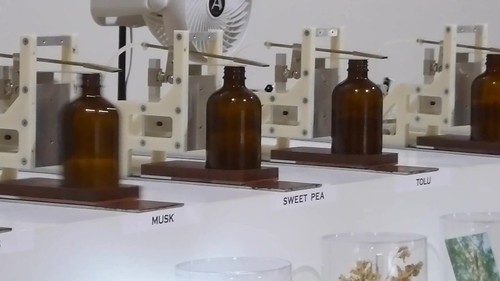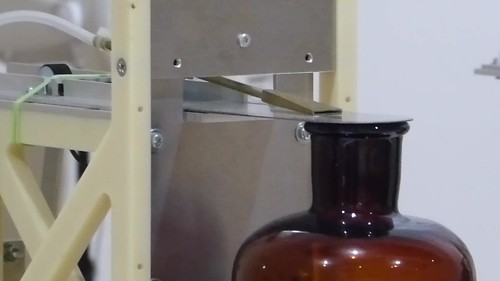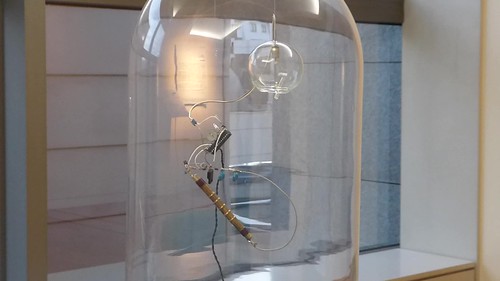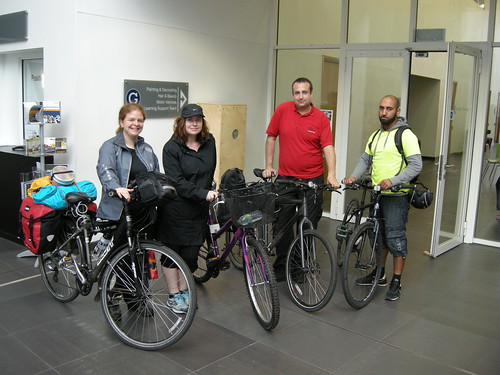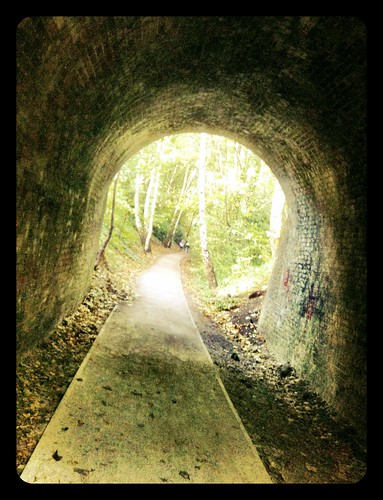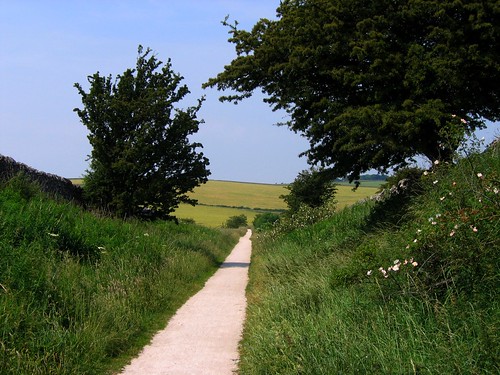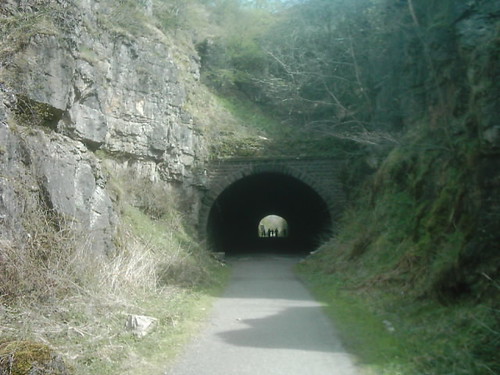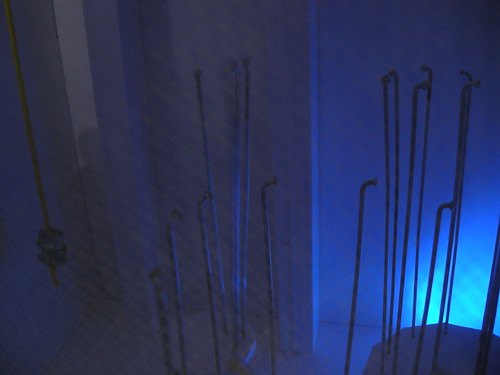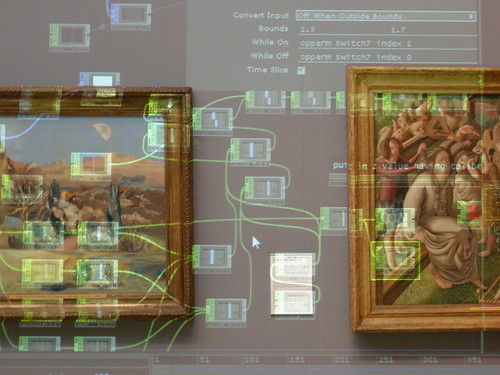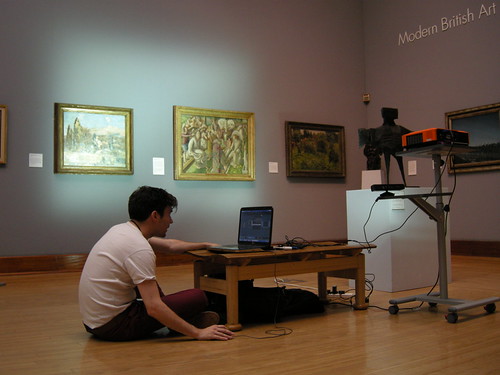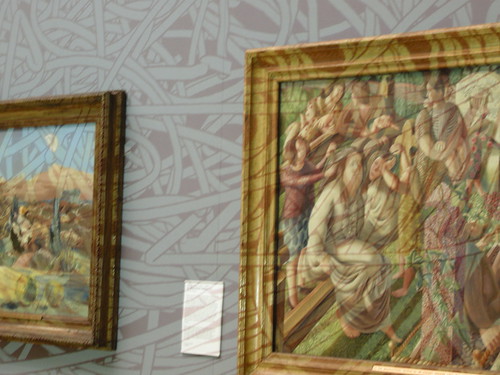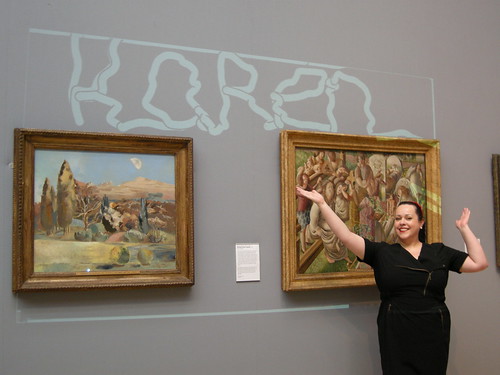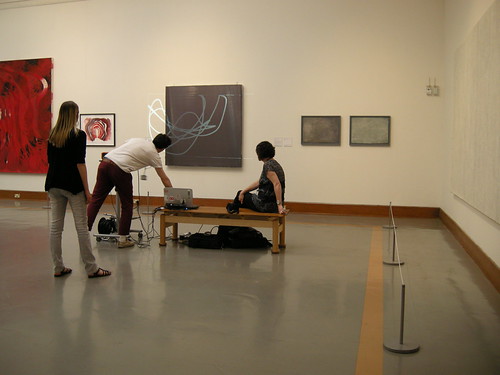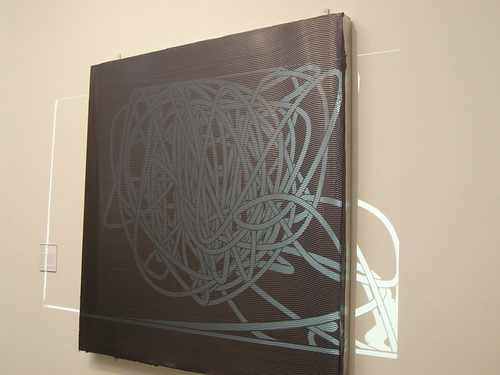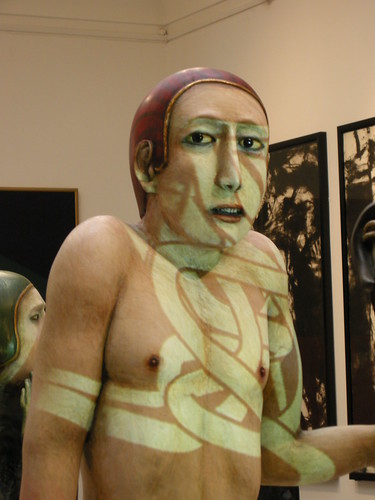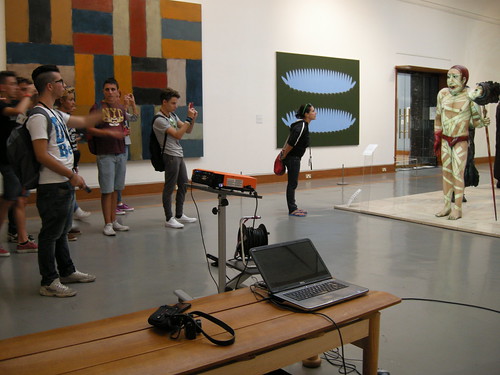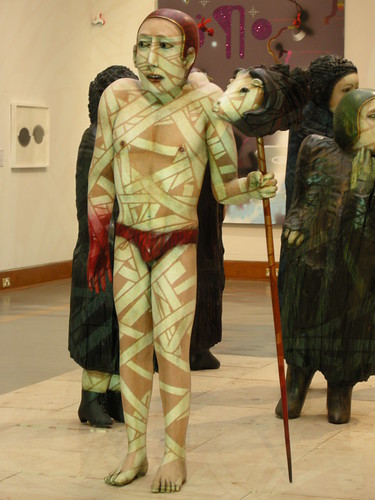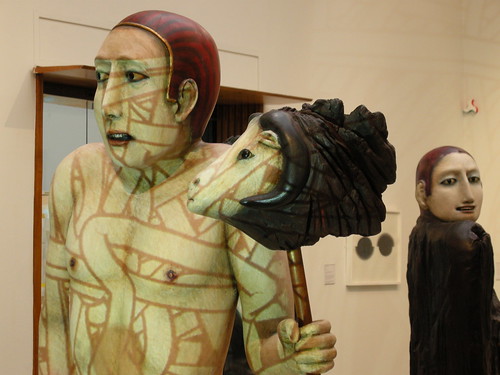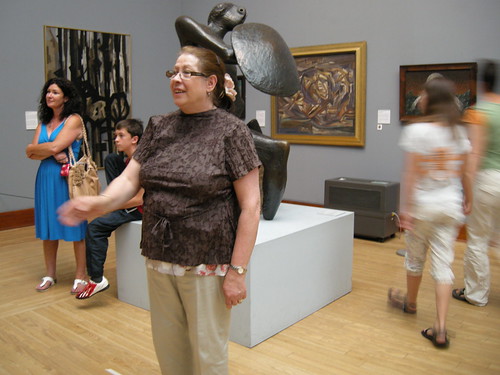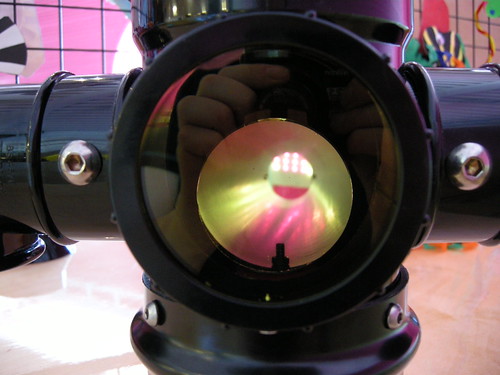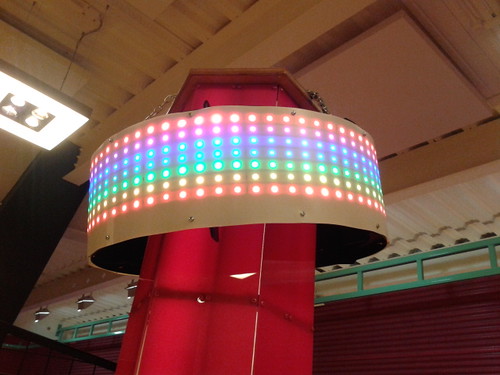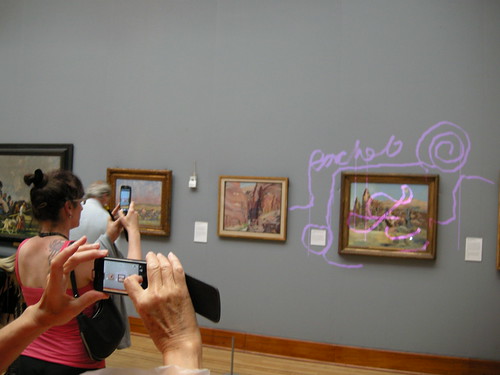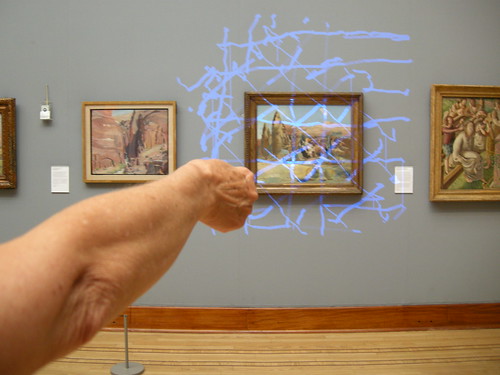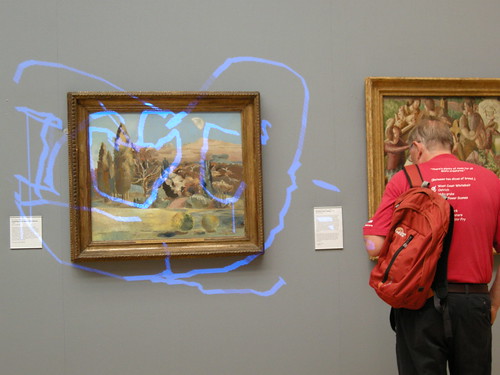Tokyo Interactions: putting the work in
My first full day in Tokyo.
Making my way to my digs the afternoon before, I’d surfaced out of the train station to find myself at Tokyo Opera City: a place I recognised because I’ve been to the Intercommunication Center (ICC) a couple of times. The ICC is run by the telecommunications company NTT East and exhibits media art and interactive multimedia and I quite like their programming although I haven’t yet quite got to the stage where I remember this and go there by default! Anyway, making the most of being local and it being the last day of a multi-sensory sound-based exhibition I went for a look.
OTO NO BA: Sound-digging with the senses took its theme as “sound that is not only perceived with the ears, but with various other senses, or even with the whole of the body”. Being part of the kids programme, I was anticipating it being quite hands-on, and arrived prepared to prance around a bit to interact with things!
I don’t usually have to gird my loins for interactive art in this manner: I think there may be something interesting going on there where I feel more self conscious here and aware that there’s loads more potential for doing The Wrong Thing.
Grabbing the bull by the horns I jumped straight in with a bit of tambourine action and some sort of motion-tracking projection set up (ratatap, Junichi Kanebako) that responded with visuals when you made a noise with your tambourine (or bongo, or shaker…). As an interesting side observation in hindsight, I think most of the noise was being made by the gallery staff – perhaps a reminder that interactive work either needs a facilitator or to be intuitive to use?
Next I donned a stripy tabbard and approached the Border Shirtsizer (Ei Wada) to make some noise in a pleasingly loud, lo-fi, CRT, B&W, tone generator stylee.
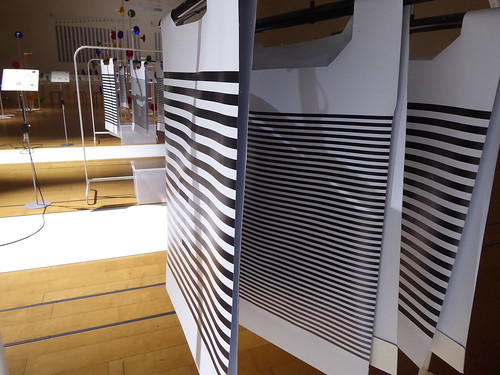

There was some nice experimenting to be done with jiggling/twisting/wafting to see how the changing camera view of the stripes changed the tone that was output.
After all that noise I made a beeline for touch the sound picnic (Junichi Kanebako). Ear defenders to block out a lot of the ambient noise and a sort of microphone set-up that transformed the sound signal into a buzz from a vibration motor.
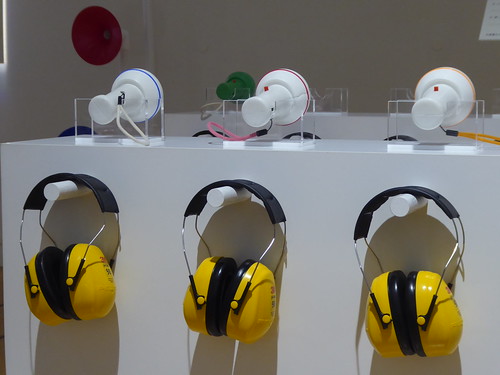
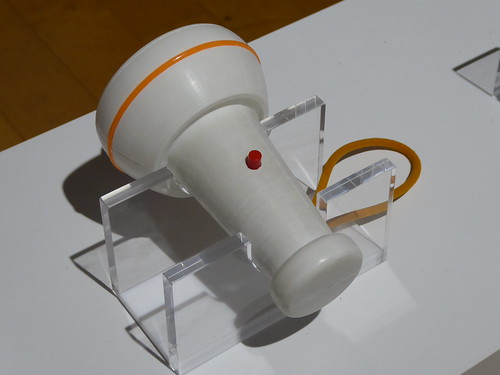
It would be interesting to take this outside and through a variety of spaces, as it was quite uniformly loud in the gallery. There was a nice percussive moment when a small child ran past me, though!
For me, the star of the show was Perfumery Organ (Perfumery Organ Project) and not just because of its massive sweeping curve and assortment of small storage.

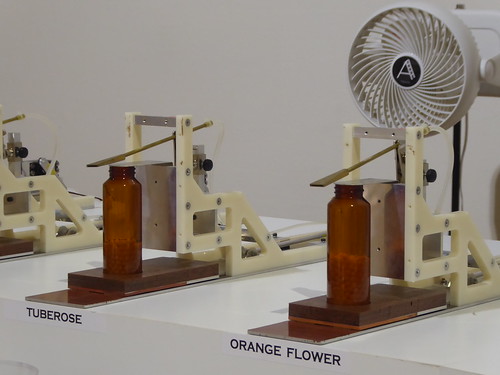
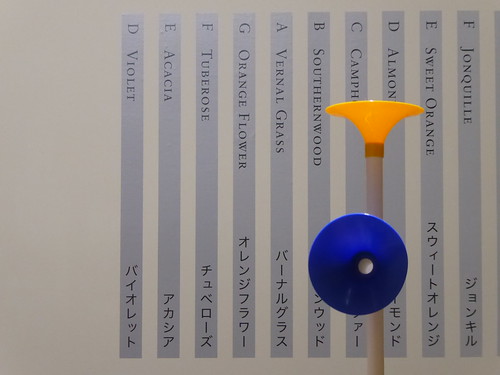
I really like this literal take on the idea that perfumes have high and low notes. It was also very engaging trying to figure out the different mechanisms at work and general detail spotting. The organ played at 15 minute intervals and, between performances, you could pick up the little canisters on the front row and sniff the different scents. (During the performance you got buffetted by heady wafts coming from the brown bottles.)
I went to Perfume: A Sensory Journey Through Contemporary Scent at Somerset House in London a few months ago, but this was very different in feel.
It’s only now as I look back at the video footage that I’m starting to realise that there were a range of different mechanisms for moving the jars/blowy things into position to make the noise.
It was close to closing time by now so I removed my ear defenders and had a quick look at the main exhibition.
It made me happy to see a piece referencing Perec’s An Attempt at Exhausting a Place in Paris, having only recently discovered the writing and used it in a workshop. Also this dead bug soldered windchime triggered by a Geiger counter was nice:
It happened that I was able to book the last slot of the day for Akio Suzuki’s acoustic installation, so I settled down to listen to Kugiuchi & Water Bottle on my own, in the dark, sealed into an anechoic chamber.
I asked the assistant if the artist provided the room or if it was in their tech specs for the gallery to sort one out. It turns out that the chamber is a permanent feature of the gallery and it gets used to house different artworks as part of different exhibitions. hmmmmmmmm……
***bingle bongle ***
Incoming message from Megumi

There’s an opening event and after party at a new shared studio space, would I like to go?
It’s in Kabata *googles “Kabata”* Yikes that’s half way to Yokohama! And it’s already gone 6 o’clock. What is this place anyway?
We talked ourselves in an out of it a few times, mostly just pitching our tiredness against knowing that it would be a really relevant thing for me to go and see and that tonight would be our best chance to meet a range of people.
We got ourselves there in the end though, and the studio was pretty impressive! Some interesting work, too, slightly different to the sorts of things I usually see at artist run exhibitions.

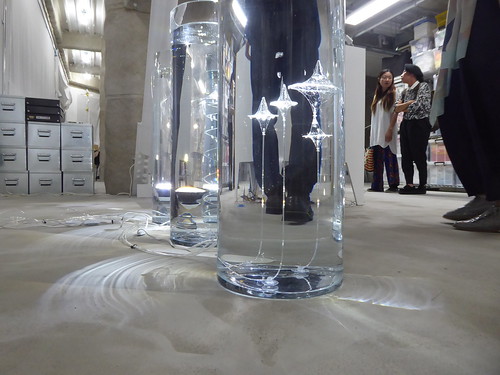

I’ll direct you to the Hunch website to find out more about the artists, but mostly so you can mouse over their profile pictures, too: http://hunch-label.com/habitat/
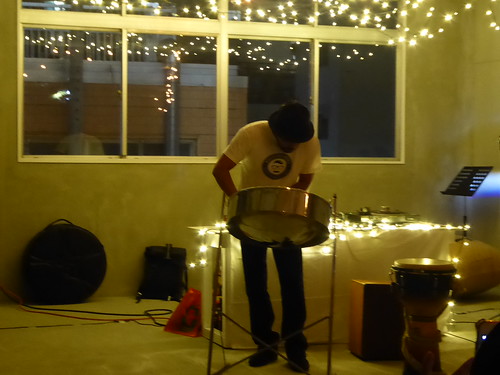
The after party involved a few chats with people to the backdrop of steel and regular drum solos by fairy light whilst a cross between Sesame Street’s Big Bird and a mirror ball rotated above us. I met a glass artist, a lecturer in English History, and an artist who also has what sounds like quite a participatory practice – another unusual find for me in Japan, we’ve arranged to meet up and chat next week without the drum soloist…
More photos from the day here: https://www.flickr.com/photos/nikki_pugh/albums/72157685522258521

